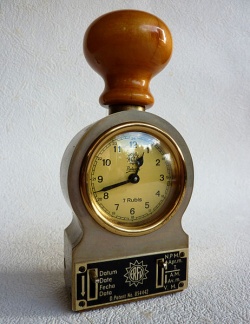Difference between revisions of "Timestamp"
| Line 5: | Line 5: | ||
Данни, които '''идентифицират и удостоверяват''', кога (година, ден,час, секунда ...) е възникнало дадено събитие. | Данни, които '''идентифицират и удостоверяват''', кога (година, ден,час, секунда ...) е възникнало дадено събитие. | ||
*пощенско клеймо | *пощенско клеймо | ||
| − | *електронно удостоверение на време | + | *[[електронно удостоверение на време]] |
Revision as of 15:01, 12 October 2012
timestamp или удостоверявание на време
Данни, които идентифицират и удостоверяват, кога (година, ден,час, секунда ...) е възникнало дадено събитие.
- пощенско клеймо
- електронно удостоверение на време
Удостоверители за време
За да има юредическа стойност удостоверението за време, то трябва да бъде издадено от сертифициран удостоворител в границите на европейски съюз. За България е серитифицирана КРС, която от своя страна е сертифицирала удостоверители, като Борика-Банксервиз АД (B-trust), Инфоарти АД и други.
В момента единствено B-trust предлага безплатно издаване на удостоверение за време.
is a sequence of characters or encoded information identifying when a certain event occurred, usually giving date and time of day, sometimes accurate to a small fraction of a second. The term derives from rubber stamps used in offices to stamp the current date, and sometimes time, in ink on paper documents, to record when the document was received. A common example of this type of timestamp is a postmark on a letter. However, in modern times usage of the term has expanded to refer to digital date and time information attached to digital data. For example, computer files contain timestamps that tell when the file was last modified, and digital cameras add timestamps to the pictures they take, recording the date and time the picture was taken. Contents
1 Digital timestamps 2 Examples 3 Standardization 4 Other meanings 5 See also 6 Notes
Digital timestamps
A timestamp is the time at which an event is recorded by a computer, not the time of the event itself. In many cases, the difference may be inconsequential: the time at which an event is recorded by a timestamp (e.g., entered into a log file) should be close to the time of the event.
The sequential numbering of events is sometimes called timestamping[citation needed].
This data is usually presented in a consistent format, allowing for easy comparison of two different records and tracking progress over time; the practice of recording timestamps in a consistent manner along with the actual data is called timestamping.
Timestamps are typically used for logging events or in a sequence of events (SOE), in which case each event in the log or SOE is marked with a timestamp. In filesystems, timestamp may mean the stored date/time of creation or modification of a file.
